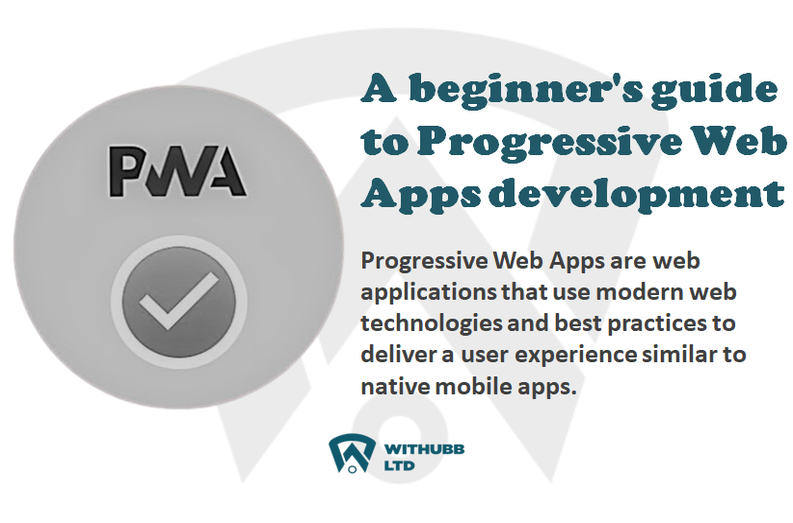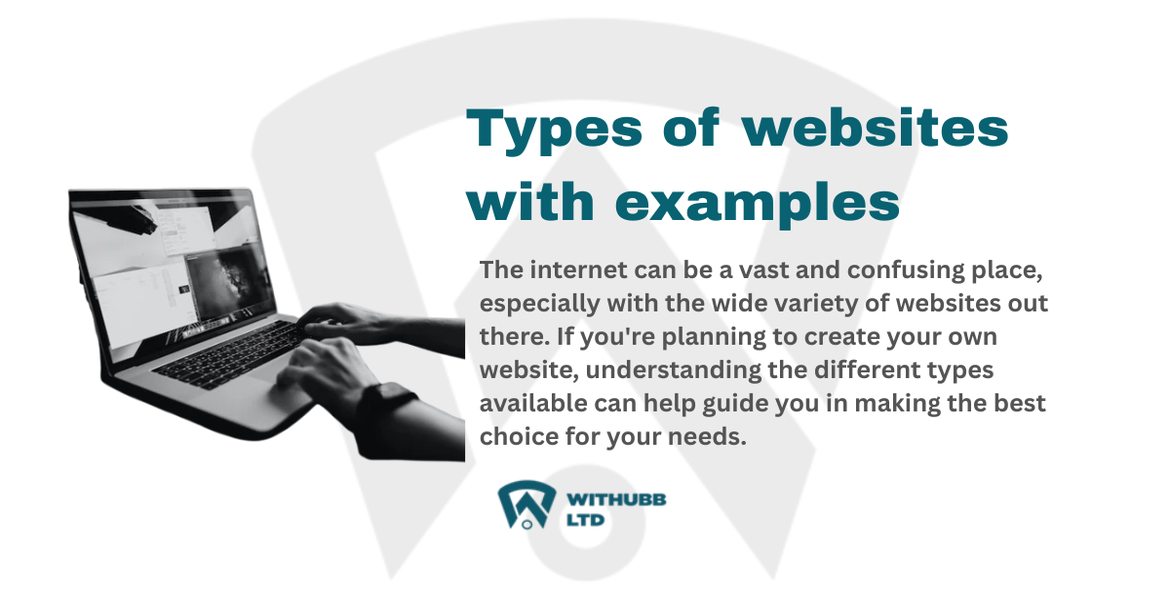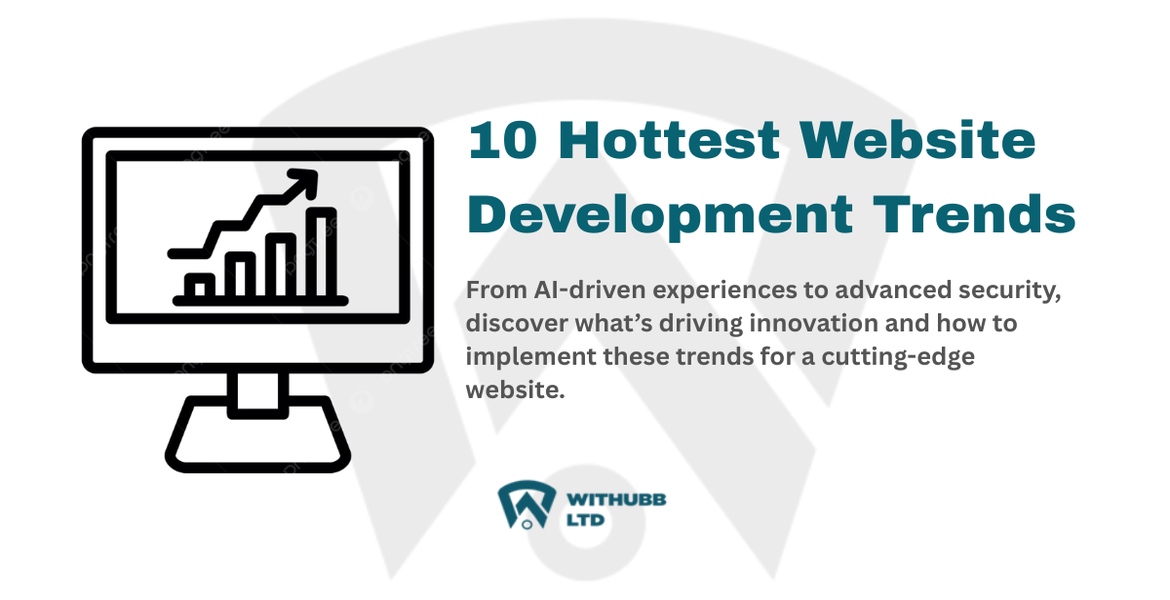Important features every business website should have.

A well-designed and functional website is essential for reaching your audience, establishing credibility, and driving growth. However, simply having a website isn’t enough—what’s crucial is ensuring that your site incorporates essential features that enhance user experience, functionality, and overall success. Here are the top 11 features every business website should have, ensuring it is not only visually appealing but also a powerful tool for your business.
1. User-Friendly Navigation
No matter how aesthetically pleasing your website is, if visitors can’t find what they’re looking for quickly and easily, they will leave. Intuitive navigation ensures that users can browse through your site effortlessly, locating important information such as services, pricing, contact details, and other critical content. A well-organized menu, clear categories, and a search bar are key components of effective navigation. A clean and structured navigation layout not only keeps users engaged but also enhances the overall user experience, making it easy for them to find what they need without frustration.
2. Responsive Design
With over half of all internet traffic now coming from mobile devices, a mobile-responsive website is no longer a luxury—it’s a necessity. Mobile responsiveness means that your site adjusts its layout and content to fit smaller screens, ensuring it looks and works well on smartphones and tablets. Without a responsive design, visitors are likely to encounter formatting issues or struggle to navigate, leading to higher bounce rates. A responsive site improves user experience, keeps visitors engaged longer, and helps with search engine optimization (SEO) since Google ranks mobile-friendly sites higher.
The beauty of responsive design lies in its ability to create consistency across all devices. Whether a user is accessing the website on a smartphone during their commute or on a laptop at their desk, the site's design remains cohesive and visually appealing. This consistency not only reflects positively on the brand's professionalism but also reinforces brand identity. By investing in responsive design, businesses can ensure that their online presence is seamless and engaging for all users, regardless of the device they use.
3. Compelling Visual Design
When it comes to making a lasting impression, visual design plays a crucial role in capturing visitors' attention and conveying the brand's identity. A visually appealing website design is like a work of art, drawing users in and leaving a memorable impact. From vibrant colors to captivating imagery, every visual element should reflect the brand's personality and values.
Incorporating consistent branding elements such as colors, typography, and imagery helps to create a cohesive and professional look across the website. A well-designed visual identity not only enhances the user experience but also builds brand recognition and differentiation. By maintaining a visually appealing design, businesses can establish credibility and leave a positive impression on visitors.
Key features of compelling visual design on a business website include:
- Clean and aesthetically pleasing layout
- High-quality images and graphics
- Consistent use of brand colors and typography
- Emphasis on visual hierarchy for easy navigation
- Engaging multimedia elements such as videos and animations
With these elements in place, businesses can create a visually stunning website that not only attracts and retains visitors but also reinforces their brand identity in the digital landscape. By prioritizing compelling visual design, businesses can make a lasting impact and stand out in a competitive online environment.
4. Clear Call to Action (CTA)
When visitors land on a business website, they should be greeted with clear and compelling calls to action (CTAs) that guide them towards taking specific actions. A well-crafted CTA serves as a roadmap, directing visitors to sign up for newsletters, make purchases, or request quotes effortlessly. Here are some key points to consider when implementing CTAs on your website:
Action-Oriented Language:
Use persuasive language that encourages visitors to take immediate action. Phrases like "Sign up now" or "Get started today" create a sense of urgency and drive conversions.
Visually Appealing Buttons:
Design eye-catching buttons that stand out on the page and attract attention. Utilize contrasting colors, clear fonts, and appropriate sizing to make your CTAs impossible to miss.
Strategic Placement:
Position CTAs strategically throughout your website to maximize visibility and engagement. Place them above the fold, at the end of blog posts, or on product pages to capture visitors' attention at key moments.
A/B Testing:
Experiment with different CTA designs, placements, and messaging to determine what resonates best with your audience. A/B testing allows you to optimize your CTAs for maximum effectiveness and conversion rates.
Incorporating clear and compelling CTAs on your business website can make a significant impact on user engagement and conversion rates. By guiding visitors towards taking specific actions and making it easy for them to do so, you can drive desired outcomes and achieve your business goals effectively. Remember, a well-designed CTA is like a friendly nudge in the right direction, helping visitors navigate through your website with purpose and intent.
5. Contact Information and Customer Support
Contact information and customer support are the backbone of any successful business website. Providing easily accessible contact details, such as phone numbers, email addresses, and physical addresses, shows visitors that you are open and available for communication. When visitors have questions or concerns, having clear contact information readily available makes it easy for them to reach out and connect with your business. Additionally, businesses should consider adding features such as automated email confirmations, integrations with CRM systems, and real-time notifications to ensure prompt follow-up with leads.
Customer support plays a vital role in building trust and loyalty with your audience. By offering responsive and helpful customer support, you show customers that their satisfaction is a top priority for your business. Whether it's resolving issues, answering inquiries, or providing assistance, prompt and effective customer support fosters positive relationships and can lead to repeat business. Additionally, having a dedicated customer support team demonstrates your commitment to providing excellent service to your customers.
Displaying contact information prominently on your website not only facilitates communication but also helps to establish credibility and trust with visitors. When visitors see that your business is transparent and easily reachable, they are more likely to feel confident in engaging with your products or services. Providing clear and concise contact information showcases your professionalism and reliability, instilling a sense of confidence in potential customers. Remember, building strong relationships with customers starts with making it easy for them to reach out and connect with your business.
Incorporating customer support into your website strategy not only enhances user experience but also sets you apart from competitors. By offering exceptional customer support, you differentiate your business and create a positive impression that can lead to long-term customer loyalty.
6. Compelling Content Captivating Your Audience
The heart of any successful business website lies in its content. Engaging and informative content not only attracts visitors but also keeps them coming back for more. Your content should be relevant, well-written, and tailored to your target audience. High-quality content establishes your brand as an authority in your industry and can significantly impact how users perceive your business. From blog posts and product descriptions to testimonials and case studies, all content should be clear, concise, and free of jargon that might confuse readers. Regularly updating your content keeps your website fresh and relevant, improving both user engagement and SEO rankings.
Elevating Your BrandQuality content goes beyond just words on a page – it's a reflection of the brand's identity and values. Consistent messaging, tone, and visual elements help to create a cohesive brand image that resonates with customers. Through storytelling and visual storytelling, businesses can connect with their audience on a deeper level, fostering brand loyalty and creating lasting impressions.
Providing Value to VisitorsAt the core of compelling content is providing value to visitors. Whether it's solving a problem, answering a question, or entertaining the audience, content should offer something meaningful and relevant. By understanding the needs and preferences of their target audience, businesses can tailor their content to meet those expectations, ultimately creating a positive and engaging experience for visitors.
Driving Conversions and EngagementGood content not only attracts visitors but also encourages them to take action. By incorporating persuasive calls to action, businesses can guide visitors towards desired outcomes, such as signing up for a newsletter, making a purchase, or contacting the business. By creating a seamless journey through the website with compelling content, businesses can drive conversions, increase engagement, and ultimately achieve their online goals.
7. Boosting SEO Performance
Search engine optimization (SEO) is the practice of optimizing your website to rank higher on search engines like Google. Without proper SEO, your website will struggle to attract organic traffic, no matter how beautiful or functional it is. SEO optimization involves several factors, such as using relevant keywords, creating meta descriptions, adding alt text to images, and ensuring fast page load times. It also includes having a mobile-friendly design and obtaining backlinks from other reputable sites. Implementing SEO best practices ensures that your website is easily discoverable, helping to drive more traffic and increase brand visibility.
8. Social Media Integration
Social media is a powerful tool for business growth, and integrating it into your website can enhance customer engagement and increase visibility. By including social media buttons that link to your business profiles on platforms like Facebook, Instagram, LinkedIn, or Twitter, you allow visitors to connect with you across different channels. This integration not only boosts your social media following but also encourages visitors to share your content, expanding your reach. Social media integration is essential for fostering a community around your brand, driving traffic to your site, and providing multiple avenues for customer interaction.
9. Secure Payment Processing (for E-commerce Websites)
When it comes to online shopping, security is paramount. For businesses that operate e-commerce websites, implementing secure payment processing is non-negotiable. By incorporating SSL certificates and reputable payment gateways, customers can trust that their sensitive information is protected during online transactions. This sense of security not only builds customer confidence but also leads to increased conversions and repeat purchases, ultimately boosting business revenue.
Creating a secure payment environment is not just about protecting customer data; it's also about building trust and credibility. When customers feel safe and secure while making online purchases, they are more likely to complete transactions and return for future purchases.
10. Search Functionality
When it comes to finding specific products, services, or information on a business website, having a well-implemented search functionality is like having a helpful virtual assistant at your fingertips. By prominently featuring a search bar on the website, users can effortlessly access the content they're looking for, saving time and reducing frustration. This simple yet powerful tool enhances the overall user experience by allowing visitors to directly navigate to what they need, making their journey through the website smooth and efficient.
Convenience is key, and a search function on a business website is the very of convenience. Imagine a scenario where a visitor is in a hurry to find a particular product or service. With a search bar readily available, they can simply type in their query and voila! The desired information is right at their fingertips. This feature not only improves user satisfaction but also boosts engagement and encourages repeat visits, as users can easily locate content of interest without getting lost in a sea of web pages.
11. Analytics and Tracking
To measure the success of your website, you need to understand how visitors are interacting with it. Analytics and reporting tools provide insights into key metrics such as traffic, bounce rates, user behavior, and conversion rates. Google Analytics is a popular option, offering comprehensive data on how users find your site, which pages they visit, and how long they stay. Having these tools in place allows businesses to monitor performance, identify areas for improvement, and make informed decisions to optimize their site. Regularly reviewing these insights helps ensure your website is meeting its objectives and contributing to overall business growth.
Conclusion
Your website is more than just an online platform—it’s a direct reflection of your business and the value you bring to your customers. When you ensure that it’s fast, secure, intuitive, and engaging, you create a space that leaves a lasting impression on visitors. Incorporating these key features allows you to build stronger connections with your audience, guide them effortlessly through their journey, and encourage them to take action. A well-crafted website doesn't just showcase your business—it becomes a powerful tool that drives growth, inspires trust, and keeps customers coming back for more.
Want to Build Something Amazing?
We prioritize your business success and we deliver faster. Our services are custom and build for scale.
Start nowMore Articles

Object-Oriented Programming (OOP) Meaning, Principles, Benefits.
1 week, 2 days ago · 7 min read
Security Best practices In web development
3 weeks, 2 days ago · 9 min read
A beginner's guide to Progressive Web Apps development (PWA)
3 weeks, 2 days ago · 5 min read
Types of websites with examples
3 weeks, 2 days ago · 10 min read
10 Hottest Website Development Trends You Can’t Ignore in 2025
3 weeks, 2 days ago · 10 min read
How to Set Up Django with PostgreSQL, Nginx, and Gunicorn on Ubuntu VPS Server
4 weeks, 1 day ago · 12 min read
Best Domain Extension Guide: .com vs .net vs .org vs .ng (2025)
4 weeks, 1 day ago · 6 min read
Top Web Design Tools for Professionals in 2025: Best UI/UX & Development Software
4 weeks, 1 day ago · 6 min read
Top 20 resources for learning code and programming online in 2025
4 weeks, 1 day ago · 7 min read
A comprehensive guide to database backup and recovery (Tips, Strategies, Common mistakes)
1 month, 1 week ago · 12 min read
x

